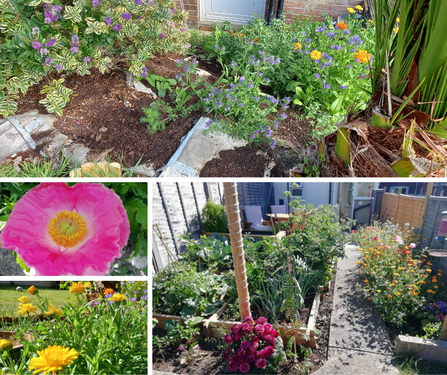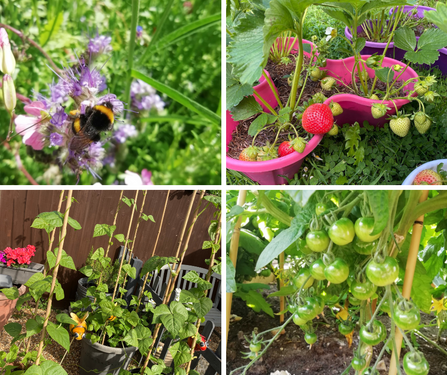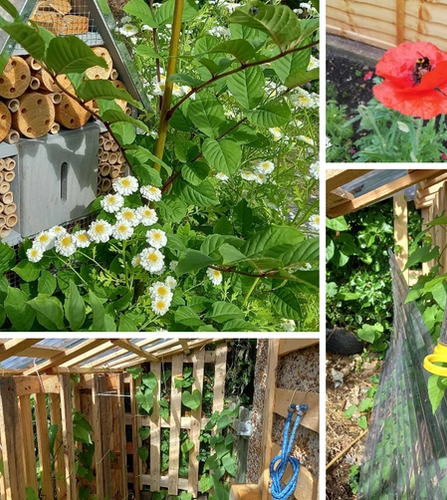The team shares a passion for protecting and encouraging wildlife where they can, they’ve been busy creating a wildlife haven in their gardens. The majority of the team has installed bug boxes, bird houses and even a feeding station for badgers and foxes.
Each team member is involved in growing vegetables in-house which are then taken home to plant. We believe growing our own fruit and veg is both rewarding and sustainable, it’s also a great way to encourage wildlife.

We share ideas and encourage others to opt for a more natural approach when it comes to gardening. The problem with using chemicals is the negative impact it has on the environment and wildlife, in fact, slug pellets and pesticides were the primary cause of the Hedgehog decline, their food was either eradicated or poisoned.
‘It’s estimated that there were some 30 million hedgehogs in Britain in the 1950s. By the 1990s, this number had plummeted to 1.5 million. In 2020 the hedgehog was added to the Red List for British mammals, listed as a creature at risk of extinction.’
- keeptheban
It doesn't just affect wildlife, it affects us too. Bees are responsible for 75% of our food worldwide meaning if bees were to be wiped out, so will our food source not to mention the price of food will skyrocket.
Protecting wildlife is fundamental for the planet and it's also very rewarding, unfortunately, more and more wildlife species are in decline and they need our help.
The easiest thing you can do to help protect wildlife is to plant native wildlife flowers in your garden. This is a very important food source for pollinators (and it’s pretty to look at), by planting native flowers in your garden you’re helping the survival of pollinators as well as the planet for future generations. If you’re not a keen gardener or don't know where to start then not to worry, wildflowers come in different forms including seed bombs which you can scatter in the garden and leave to grow (I personally recommended Seedball). Don’t forget to add a small water dish to the bees for drinking, remember to place in stones so the bees don't fall into the water.

If you’re looking for more wildlife beyond the bees and butterflies, here's a few tips on encouraging wildlife.
- Feeding: Provide a bird feeding station alongside a water dish, it’s important to note that once you start feeding birds you need to keep feeding them throughout the year as they start to become dependent on it.
- Offer homes: Provide bug houses, bird houses, bat houses, hedgehog houses and even frog houses!
- Build a pond: This doesn't necessarily need to be large, not built from scratch, you can use an old pot or sink (sealed), fill it up with water and pop some pond plants in, it won't be long until you start seeing dragonflies, toads and other creatures.
- Plant trees and shrubs: by planting trees and shrubs you’re creating coverage for wildlife to live and travel, birds, badgers and hedgehogs are a few examples.
- Create access into your garden for wildlife to pass through, you can jazz it up with a hedge Hedgehog Highway surround.
The team has carried out surveys for pollinators via FIT count (Flower-Insect Timed Counts) where the data is then sent to the UK Pollinator Monitoring Scheme to help understand the numbers of pollinators in different areas.
The team has shared a few photos of their gardens, with an array of flowers, feeders and veggies.

Building a brand to future-proof the business
WRS is a leader in the Point of Sale (POS) industry, with systems in nine countries, across over 5,000 sites. It's a leader and expert in its field but needed a brand to match.

The power of people
Our business is based on three core areas - People, Planet and Prosperity. In our latest Impact Report, we take a closer look at the progress we've made over the last year around each one. Starting with People.

Strategic approach to Sydenhams' sustainability stories
Showcasing expertise and passion for sustainable building was becoming a problem for Sydenhams Timber Engineering. It was one NOSY was very happy to solve.
